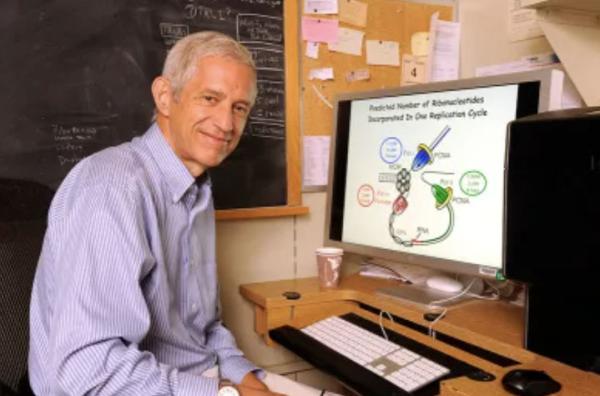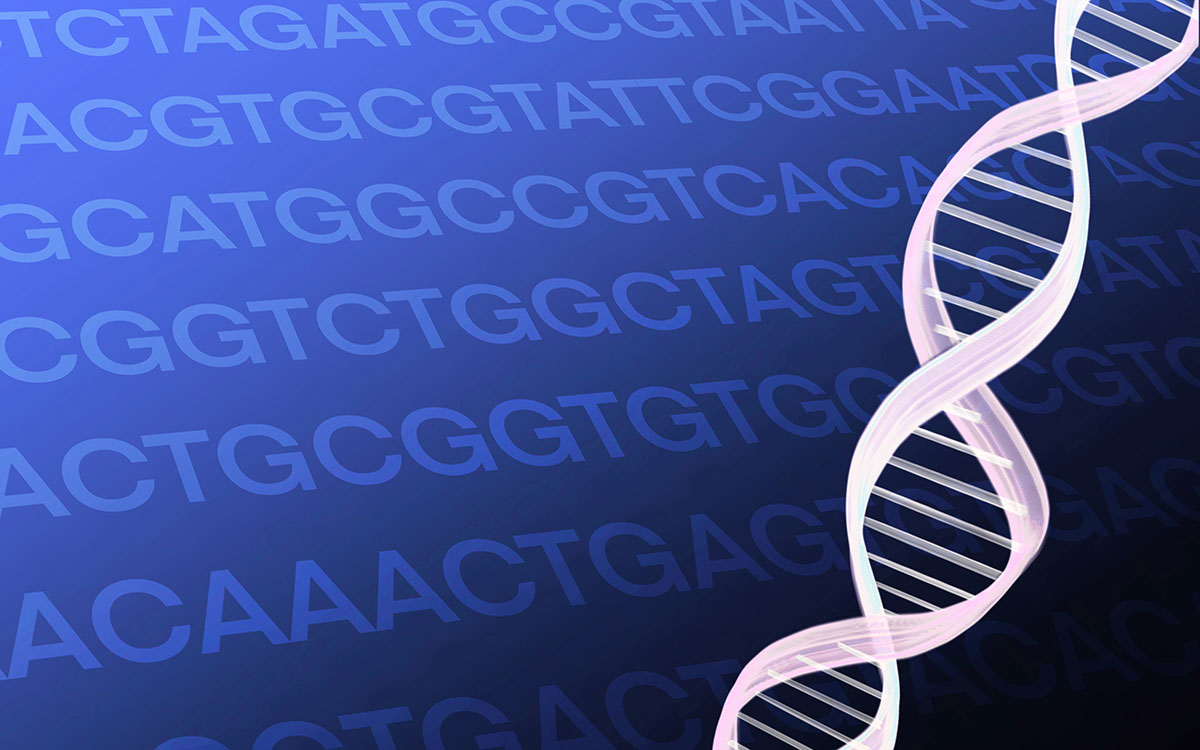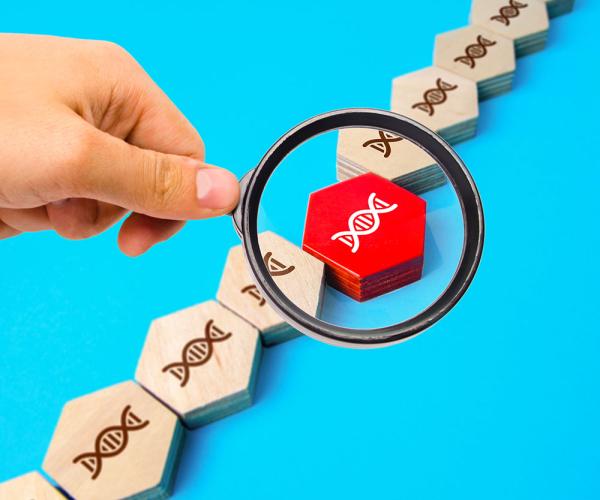IRP’s Thomas Kunkel Elected to National Academy of Sciences
Scientist Honored for Discoveries About DNA Replication

IRP Distinguished Investigator Thomas Kunkel was elected to the National Academy of Sciences earlier this year for his contributions to our knowledge of how cells copy their DNA.
Our cells’ ability to create more of themselves is crucial for many aspects of health, but a cell without DNA can’t do all that much. For that reason, perhaps the most crucial step in cell division is the replication of DNA. IRP Distinguished Investigator Thomas Kunkel, Ph.D., has spent his career trying to understand DNA replication, what happens when the process goes wrong, and what influences the likelihood of mistakes. Earlier this year, he was elected to the National Academy of Sciences (NAS) in recognition of his extensive contributions to this field.
A former high school teacher, Dr. Kunkel has a simple way to explain his work. Instead of the nucleotides and base pairs that make up DNA, he talks about typing and books.
“Imagine having to type out a few very long books,” he begins. “You have three chances to get it right. First, you can type as carefully as possible, but most likely you’ll make a few typos along the way. You might catch some of those mistakes while you’re typing and be able to backtrack and fix them. Finally, you can proofread afterward and fix a few more.”
Our cells do this all the time, typing out 6 billion ‘letters,’ known as nucleotides, in just a couple of hours every time a cell divides so that the new cell has its own, identical set of DNA — or, at least, that’s the ideal scenario. In reality, DNA replication doesn’t always produce an identical copy of the original DNA, and those mistakes, depending on their exact location in the DNA, can cause a wide variety of diseases from autoimmune disorders to neurodegenerative diseases to cancers.
“It all comes back to that fact that normal DNA replication is highly accurate,” Dr. Kunkel says. “Think about only making one mistake for every 6 million letters you type into a document. How in the world can anything be that accurate? Yet, if you mess that up in any of dozens of different ways, you can cause an autoimmune disease or other problem.”

Considering how many ‘letters’ are in each DNA molecule, it’s amazing that cells do such a good job accurately copying their DNA.
On the other hand, replication errors aren’t all bad. After all, the process of evolution depends on occasional DNA replication errors that provide some kind of advantage, such as a stronger immune system, which is then passed down to future generations. Unfortunately, disease-causing pathogens can similarly use DNA replication errors to their advantage. For instance, Dr. Kunkel has shown that the enzyme that copies HIV’s genome is highly inaccurate, and the mistakes it makes can make the new copies of the virus resistant to some therapies.
“My lab is interested in the very basic research on how DNA replication fidelity occurs,” Dr. Kunkel says. “The vast majority of life on earth has DNA and if you consider all the different forms of life on the planet, that’s a lot of different kinds of cells, so we’re interested in how that replication occurs accurately and what goes wrong to cause evolution or to affect human health.”
As the leader of NIH’s DNA Replication Fidelity Group, Dr. Kunkel and his team have discovered many of the steps involved in maintaining accuracy in DNA replication, as well as uncovered how environmental stresses like chemicals and radiation can interrupt the process and damage DNA. Much of his work focuses on the enzymes, called DNA polymerases, that build new DNA.

DNA polymerases not only build new DNA molecules, but they also identify errors made by other DNA polymerases and fix them.
When DNA replication begins, DNA polymerases must first select the correct nucleotides, just like a typist must hit the right keys on a keyboard. As this is happening, additional DNA polymerases correct any errors they find along the way, hitting the genetic ‘backspace’ key to fix mutations that occurred during DNA replication. This proofreading-like process keeps the new DNA copy as close to the original as possible and improves the odds that a new cell will survive. There’s also a third step, which Dr. Kunkel and his colleagues discovered. In this stage, called mismatch repair, DNA polymerases in the cell proofread the finished DNA copy and correct any remaining mistakes. This insight has improved understanding of how cells maintain their genetic information across all the times they divide over the course of an organism’s lifespan.
Rather than focusing on the initial assembly of a new DNA molecule, Dr. Kunkel’s team mostly studies what happens when the second and third steps, proofreading and mismatch repair, go wrong. For this, they utilize yeast cells and a technique Dr. Kunkel developed to identify and count mutations in segments of DNA.
“If you look at all the different kinds of DNA damage that can occur — and there are hundreds of kinds — members of our lab may choose a particular type and investigate how that particular mutation is replicated rather than being fixed,” he says.

Dr. Kunkel’s team uses X-ray crystallography to learn about the structures of DNA polymerases, which helps us understand how they work.
Other times, DNA polymerases accidentally add a bit of DNA’s close cousin, RNA, into the DNA copy. As important as RNA is for cells, if it becomes a part of a new strand of DNA and the error is not fixed, the DNA will be damaged — pieces of it may end up missing in the final copy, or it may even break apart. Among his many accomplishments, Dr. Kunkel and his colleagues discovered the process through which DNA polymerases prevent these bits of RNA, called ribonucleotides, from being incorporated into DNA.
With proper DNA replication being so hugely important for the health of our bodies, it’s no surprise that it’s an extremely complicated process, nor that tons of researchers study it. Consequently, the questions Dr. Kunkel’s lab can investigate have multiplied enormously since he started his career.
“When I first started working as a graduate student, the scientific world acknowledged three different types of DNA polymerases in cells,” Dr. Kunkel says. “Now that number has grown to 17 different DNA polymerases, all of which have very important and specialized roles in DNA replication and repair.”
Consequently, as much as Dr. Kunkel’s team and other scientists have discovered so far, he believes we’re just at the beginning of understanding how DNA replication produces and prevents mistakes.
“We know a lot more than we did 50 years ago, and that just leads to hundreds of new questions,” Dr. Kunkel says. “I really wonder how primitive the discoveries we’re making now will look in 20 or 50 years. It’s very exciting.”
Subscribe to our weekly newsletter to stay up-to-date on the latest breakthroughs in the NIH Intramural Research Program.
Related Blog Posts
This page was last updated on Monday, August 26, 2024
